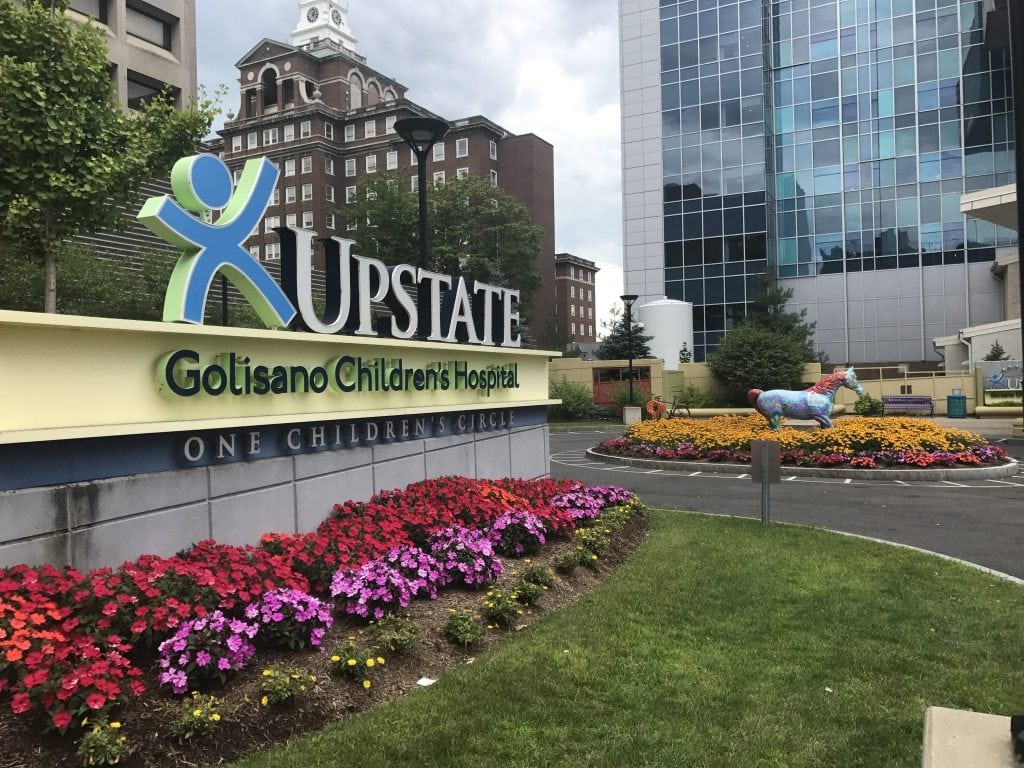A mother petitions Golisano Children’s Hospital for inpatient psychiatric beds
A mother petitions for inpatient psychiatric beds

She wanted to be like Michael Myers.
Debi Hobbs woke up in the middle of the night fearing something was wrong. She found her daughter, Amaya Stethers, in the closet with a knife. Amaya, who had been diagnosed with Schizoaffective Disorder and Autism, later told her mother that she wanted to be like famed movie killer.
Even after this episode, Hobbs waited two months, trying everything else in her power, before seeking an inpatient facility for her daughter. When she could, Hobbs avoided the inpatient facilities available around Syracuse.
Stethers, 14, died in inpatient care at Hutchings Psychiatric Center on June 1, 2017. Hobbs is now petitioning Golisano Children’s Hospital for the inpatient beds that she believes could have saved her daughter’s life.
Amaya suffered from constipation as well as hallucinations that forced her into occasional hospitalization. When Amaya was at Golisano being treated for constipation, she was in a wing that was open to parents. It was bright and geared toward recovery. It was a social atmosphere with toys and game systems available.
“When you go to Golisano,” Hobbs said, “it doesn’t feel like ‘This is it, this is all, this is the end.’”
But Golisano’s facilities don’t have an inpatient psychiatric wing for children. Rather than being consistently treated at her preferred hospital, Stethers was only afforded short stints.
When Four Winds Hospital closed in 2004, the Syracuse community lost 64 youth beds for psychiatric care. This closure forced families in need to travel as far as Buffalo and Saratoga for inpatient care, according to a task force organized by U.S. Rep. John Katko in 2015 to look at the needs for children with mental illness in Syracuse.The task force also said New York State is meeting just 44 percent of the need for health care providers.
Karen Winters Schwartz, president of National Alliance on Mental Illness Syracuse, served on the task force. NAMI and Family Tapestry were vocal in asking for beds for children with serious mental illness as Golisano hospital was being built, Schwartz said. Their requests were met with promises but no action.
“My understanding: they wanted their beds for the sick children,” Schwartz said. “I don’t know at what point the brain got separated from the body and that’s not an organ that can get sick.”
The issues came to a head with Stethers. While Hutchings had access to her psychological records, they didn’t have access to her medical records. Despite Hobbs’ warnings about Stether’s constipation, the 14-year-old still had a bowel obstruction at Hutchings that left her unresponsive. She had to be resuscitated three times.
“When I saw Amaya on the gurney at Upstate when she coded three times,” Hobbs said, “she looked to be nine months pregnant.”
Hobbs believes this wouldn’t have happened at Golisano. At Golisano, Hobbs said, the proper professionals with the proper equipment could have intervened and saved Amaya’s life.
Hobbs says she’s not bitter toward any service or center. She said she knows good people with good intentions work at all of these places but that the current system is flawed and confusing for parents of sick children.
“If that can happen to me, that can happen to anyone,” said Hobbs.
According to the National Institute for Mental Health, just over 21 percent of children ages 13 to 18 either currently or at some point in their lives have a seriously debilitating mental disorder.
“In Syracuse,” Judy Ridgway, a former NAMI president and current board member, said, “I think that we are rich in services, but they’re not fully organized.”
Hobbs and Schwartz echo the concern over the lack of a central information point for parents. Hobbs sees the current system as reactive—waiting for children to have issues rather than attempting preventative care. She said that parents have to study all the information they can, especially before talking to their children’s doctors.
“If you don’t go in and you don’t use the same terminology or psychiatric terminology that they’re using,” Hobbs said, “they’re dismissing you.”
Hobbs says she sees no hospital accountability or transparency. Centers like Hutchings don’t allow parents to even see where their children sleep. This leads to parents like Hobbs avoiding using these inpatient services.
“Because, once your kid goes in,” Hobbs said, “I’m sorry, your hands are tied in a lot of ways.”
While Schwartz, Ridgway, and Hobbs all praise Golisano’s capabilities, they all point out that it has a glaring blind spot when it comes to children with mental illness. Hobbs said the addition of inpatient beds at Golisano can help empower parents and provide better outcomes for their children.
“God forbid there’s another Amaya,” she said. “God forbid there’s another Amaya.”





